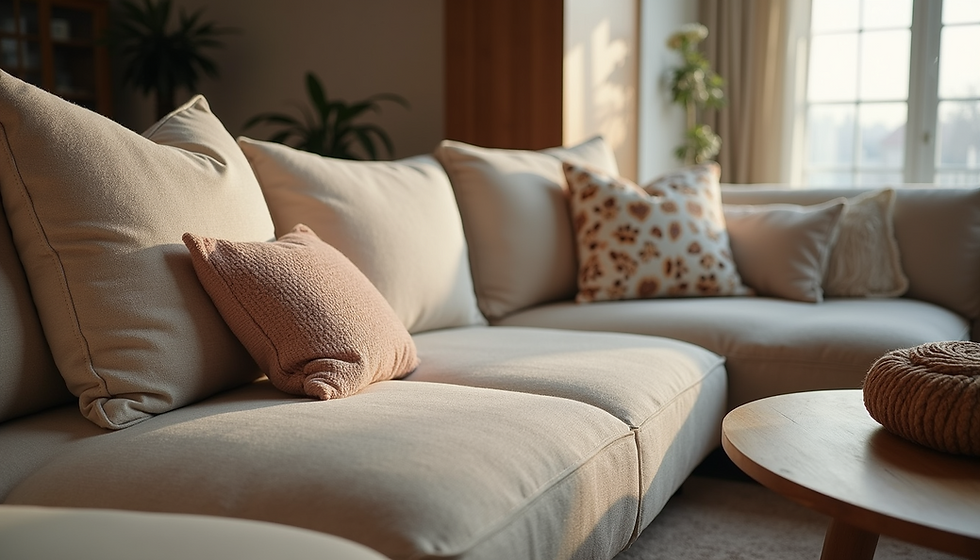How to Take Care of Bamboo Plant Indoor
- Jayant Upadhyay
- Jun 27
- 3 min read
Updated: Jun 28

Bamboo plants are a popular choice for indoor greenery due to their elegant appearance and low maintenance needs. Whether you're an experienced gardener or a novice plant enthusiast, bamboo can add a touch of nature to your indoor space. However, like any plant, bamboo requires proper care to thrive indoors. In this article, we'll explore essential tips for bamboo plant care indoors, ensuring your plant remains healthy and vibrant.
Understanding Bamboo: The Basics
Before diving into care tips, it's important to understand the nature of bamboo plants. Although they resemble true bamboo, most indoor bamboo plants are actually a type of dracaena, commonly known as "lucky bamboo." These plants are quite hardy and adaptable, making them perfect for indoor environments.
The Origins of Indoor Bamboo
Indoor bamboo, or "lucky bamboo," is native to the tropical rainforests of Africa and Southeast Asia. Despite its name, it is not a true bamboo but a member of the Dracaena family. Its resilience and ability to grow in water as well as soil make it a versatile plant for indoor settings. Understanding its origins helps in creating a nurturing environment similar to its natural habitat.
Growth Habits
Lucky bamboo exhibits unique growth patterns. Unlike traditional bamboo, which can grow several feet in a single season, lucky bamboo grows at a more moderate pace. Its stems are typically thicker and more structured, which contributes to its ability to be shaped and styled. This characteristic makes it ideal for indoor use, as it can be easily maintained at a manageable size.
Symbolism and Cultural Significance
The popularity of lucky bamboo is not just due to its beauty and ease of care. It carries significant cultural symbolism, particularly in Feng Shui practices. The plant is believed to bring good luck, prosperity, and positive energy to its surroundings. The number of stalks is thought to convey specific blessings, ranging from happiness to wealth.
Choosing the Right Bamboo
When selecting bamboo for your home, consider the following:
Size and Space: Determine where you'll place the plant and choose a size that fits well in that area.
Type: While "lucky bamboo" is most common, there are various species available. Research the specific type you have or want to purchase.
Indoor Bamboo Care Essentials

Proper care involves several key aspects, including light, water, temperature, and soil. Let's explore each of these in detail.
Light Requirements
Bamboo plants prefer bright, indirect light. Direct sunlight can scorch the leaves, while too little light may cause the plant to become leggy or pale.
Optimal Placement
Position your bamboo near a window that receives filtered sunlight. North or east-facing windows work best as they provide the gentle morning sun, avoiding the harsher afternoon rays that can damage the plant. The right placement ensures balanced growth and vibrant foliage.
Artificial Lighting
If natural light is limited, consider using fluorescent or LED grow lights to supplement light exposure. These lights should mimic the natural daylight spectrum and be positioned at a safe distance to prevent leaf burn. Adjust the duration of artificial lighting according to seasonal changes to maintain consistent growth.
Signs of Light Imbalance
Understanding the signs of light imbalance is crucial. If the leaves are turning yellow or pale, it may indicate insufficient light. Conversely, brown spots can suggest overexposure. Regularly assess the plant's condition and adjust its positioning accordingly to prevent long-term damage.
Watering Your Bamboo
Watering is crucial for indoor bamboo care. These plants thrive in moist conditions but can suffer from overwatering or underwatering.
Establishing a Routine
Water your bamboo plant once a week, ensuring the soil remains consistently moist but not waterlogged. A routine helps prevent common watering mistakes that can lead to root rot or dehydration. Monitoring the top inch of soil can guide you on whether it’s time to water again.
Choosing the Right Water
Use distilled or filtered water to avoid chemicals found in tap water, which can harm the plant. Chlorine and fluoride in tap water can cause leaf discoloration and hinder the plant’s growth. Rainwater is also an excellent alternative, offering a natural and chemical-free hydration source.
Ensuring Proper Drainage
Ensure the pot has drainage holes to prevent water accumulation at the roots. Excess water should be able to escape easily to avoid root rot. A well-draining soil mix will complement the drainage holes, creating an optimal environment for the bamboo's root system.



Comments